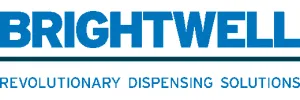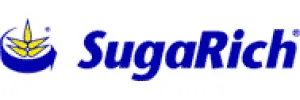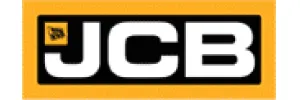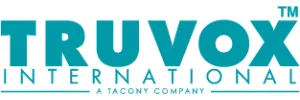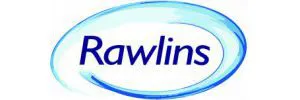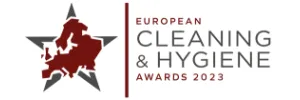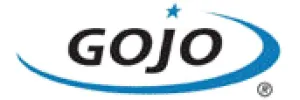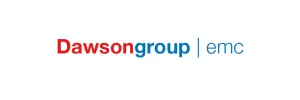News & Insights
Read the latest news from us and our clients across the globe

Posted on 29 October 2013 by adtrak.admin
Waste not
Paul Featherstone, group director of SugaRich, looks at how surplus food can be recovered within a safe legislative framework.
The UK chocolate confectionery market has proved itself to be one of the few recession-proof food sectors. Last year’s UK confectionery update from Mintel showed annual growth of around 5%, a trend expected to continue up to 2016.
As much as we love to consume confectionery, a proportion of this food is unsuitable for human consumption. This can be for a variety of reasons including products that have passed their shelf life, over-ordering, seasonal effects, overcooking, packaging defects or the wrong size or weight of goods produced.
The quality of these products is high because their ingredients were selected for use in the human food chain and confectionery has a very high nutritional value – as it is a good source of fats, sugar and carbohydrates. After checking its feed safety, traceability and therefore suitability, products can be converted into high quality ingredients for use in animal feed, avoiding waste from food that is outside of specification for human consumption.
If these products were not recycled into feed they would have to be disposed of in some other way, such as landfill or composting.
Economic and environmental benefits
Making sure that this surplus food is not considered simply as waste to be disposed of is an on-going challenge. This confectionery is often ignored or considered too small to make a difference, but what may seem like tiny percentages can equate to significant volumes of product.
The recycling of this food makes good economic sense. WRAP estimate that waste in the supply chain is costing food retailers and manufacturers £5bn annually, whilst Defra research showed that £1bn savings is available to the food and drink industry through ‘resource efficiency’ associated with low/no cost interventions.
New revenue streams are available to food manufacturing and retail customers by replacing their old and expensive waste collection and disposal methods with a service designed to save businesses money by reusing products direct to farms as animal feed.
Many businesses are unaware of how significantly waste impacts on their bottom line. With so many other issues to manage within a busy food production site or supermarket chain, getting this surplus food disposed of as waste may seem like the simplest choice, but results in a cost being levied to the business and environmental damage from landfill. These charges are increasing year on year and will reach a minimum of £80 p/t by 2014. Industry sources suggest that there is a landfill reserve of only about four years. By 2014 there could be fewer than 50 sites as disposal space is being priced out of the market.
From an environmental perspective, manufacturers and supermarkets can improve their green credentials by retaining this unsold food in the food chain rather than wasting this very valuable resource. Waste prevention can be achieved with simple changes to working practices. These can be even more effective when they are done in a collaborative way along the supply chain.
This year the European Commission launched a public consultation into food waste reduction, ‘Sustainability of the Food System’ , which is looking at how can we move towards a more resource efficient and sustainable food system. Findings are due to be published in 2014, with the areas presented for consultation including:
• Better technical knowledge on the environmental impacts of food
• Stimulating sustainable food production
• Promoting sustainable food consumption
• Reducing food waste and losses
• Improving food policy coherence
Legislative compliance
Waste prevention is also about regulatory compliance. It is becoming clear that waste disposal to landfill is uneconomical and unsustainable and, ultimately, it will not exist. The waste hierarchy is now enshrined in law at UK and EU level, as set out in the EU Waste Framework Directive (Directive 2008/98/EC). This provides the overarching legislative framework for European Union waste policy. Under it, the highest priority should given to waste prevention, followed by re use, recycling and recovery. Disposal of waste through landfill should be avoided wherever possible. There is a duty of care on businesses to act within this waste hierarchy.
Anything designated for feed use will ultimately be re-entering the food chain, so strict adherence to regulations are essential. Food and drink businesses (including retailers) that supply food products for use as animal feed must comply with the requirements of the Feed Hygiene Regulations (183/2005). These requirements are designed to protect the feed and food chains and to ensure traceability of products.
Hygiene standards are very important in the disposal of surplus foodstuffs. Products no longer intended for human consumption, which may be destined for farm animal feeding, must be kept separate during transport, storage and dispatch to and from a supermarket returns depot or food manufacturing plant.
Services used should be fully accredited to the Feed Materials Assurance Scheme (FEMAS) standard ensuring that all feeds are fully traceable from source to supply, giving both quality controlled service and products. FEMAS covers all feed ingredients intended for direct feeding to animals or for inclusion in compound feeds and blends. The scheme is audited and certified by an independent certification body, in accordance with the internationally recognised standard EN45011 (also known as ISO Guide 65). This means that the certification body is itself independently assessed every year to ensure that the standard is implemented and administered consistently and fairly.
Logistics
Each food and drink production site has different challenges. The entire location and all production processes should be audited. Tailor made surplus food handling installations should be designed to suit each individual food factory site.
Critical control points for food safety must be implemented through Hazard Analysis Critical Control Point (HACCP) systems which prevent the mixture of any non-food waste and ensure feed materials are free from any chemical or microbiological impurities.
Where inedible products or products prohibited from inclusion in feed (such as meat or fish) are stored or handled on the same site as surplus foods intended for feed use, there must be physical separation between these products and the feed products. This will ideally be full physical segregation of buildings and equipment. Detailed records of disposal of non-feed products must be maintained.
To make the process of segregating the waste as straightforward as possible, the total waste management side of our business, SugaRecycle, can help with streaming and managing of all waste products from plastics and oils through to card, packaging, metal and more.
Sealed containers with surplus food must be collected and returned using specialist vehicles. All containers should be clearly marked to avoid any chance of confusion between surplus food materials and waste.
The surplus food is then transported to purpose-built reprocessing centres where computer generated formulations manufacture a feed material to exact customer specifications, producing a range of bakery, biscuit and confectionery meals to suit feed compounders, blenders and home mixers. All packaging is separated from the food products during this process.
Quality feed within the food chain
Animal feed plays an important part in the food chain and has implications for the composition and quality of the livestock products (milk, meat and eggs) that people consume.
The Food Standards Agency is responsible for drawing up the rules on the composition and marketing of animal feed. The Agency’s main aims in this area are to help protect consumer and animal health. Another aim is to ensure that those buying the feed are provided with sufficient information to allow them to make informed choices.
Our focus is to safely and efficiently recover as much surplus food as we can and to do so inside a legislative framework that protects animals as well as the human food chain. By recognising that former foodstuff not suitable for human consumption is a resource and not a waste product, our industry is reducing the amount of waste sent to landfill every year, saving costs, and lessening environmental damage.
For more information about the recycling of former food products to formulate quality feeds for the livestock industry please contact SugaRich by telephoning 0151 5476710 email enquiries@sugarich.co.uk or visit www.sugarich.co.uk.
Published in Confectionery Production – October 2013
Experts in Public Relations Services & Communications Management
Our ServicesGenuine industry specialists in cleaning and hygiene, environmental and recycling, and facilities management
Our Sectors
